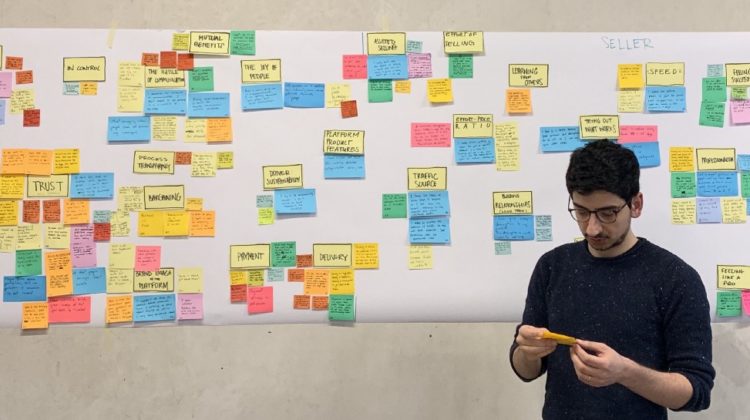
Define: what mission do you solve?
During the define phase, your team translates endless clusters of user insights into a small number of missions (or problem statements). You are synthesising information to formulate actionable missions to invest your team’s time and effort.
To understand which missions could have the biggest potential user impact, we created a common understanding of our users. This consisted of needs-based personas (i.e. personas based on needs rather than on demographics); quantification of these needs and personas (i.e. how often does this need occur in our target audience and how large is this persona segment?); and user journeys with prioritised pains and gains.
Note: if the above seems like a bunch of gibberish, you can read more about needs-based personas here and more about customer journeys here.
Again, AI and service design were closely connected. The mission that the Squared Initiative works on shouldn’t only address the biggest needs of your customers, but should also uniquely be solved through AI. In this phase, our team started to reap the benefits of a shared discover phase. We all had an understanding of what our users value — the designers didn’t need to convince their team members what direction should be taken. Building on each other’s expertise, we could take AI opportunities into account when prioritising mission areas.
The process of selecting the ‘right’ mission can create uncertainties in a team like our Squared Initiative. Our ambitions of the initiative are big: we aim for missions that allow for non-incremental innovation while containing a significant AI component and solved real user problems. To make an informed decision, we ranked potential missions on these criteria. But even if we had found data to back up the score, our ranking was still based on assumptions and the intuitions we developed about the user needs. It can be hard to see a clear, single winning mission early on. Instead, we decided to opt for multiple mission directions (problems to solve) simultaneously and see which ones sparked the most innovative ideas. Why put all your eggs in one basket anyway?
Selecting the ‘right’ mission can create uncertainties, because ambitions are big
A practical example to illustrate this phase is by thinking about e-commerce. Imagine that one of your team’s findings is that your online shoppers experience a tension between getting endless inspiration and actually acquiring an item. Such tensions can be a starting point for ideation: how can AI play a role in resolving this tension? For example, by trying to converge the endless browsers to buyers through relevant and timely recommendations.
